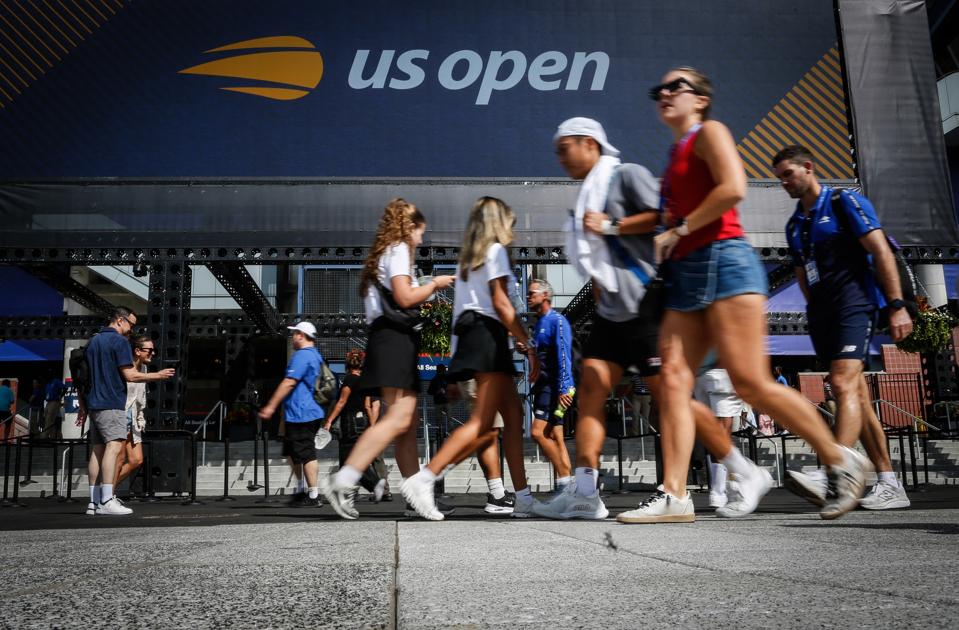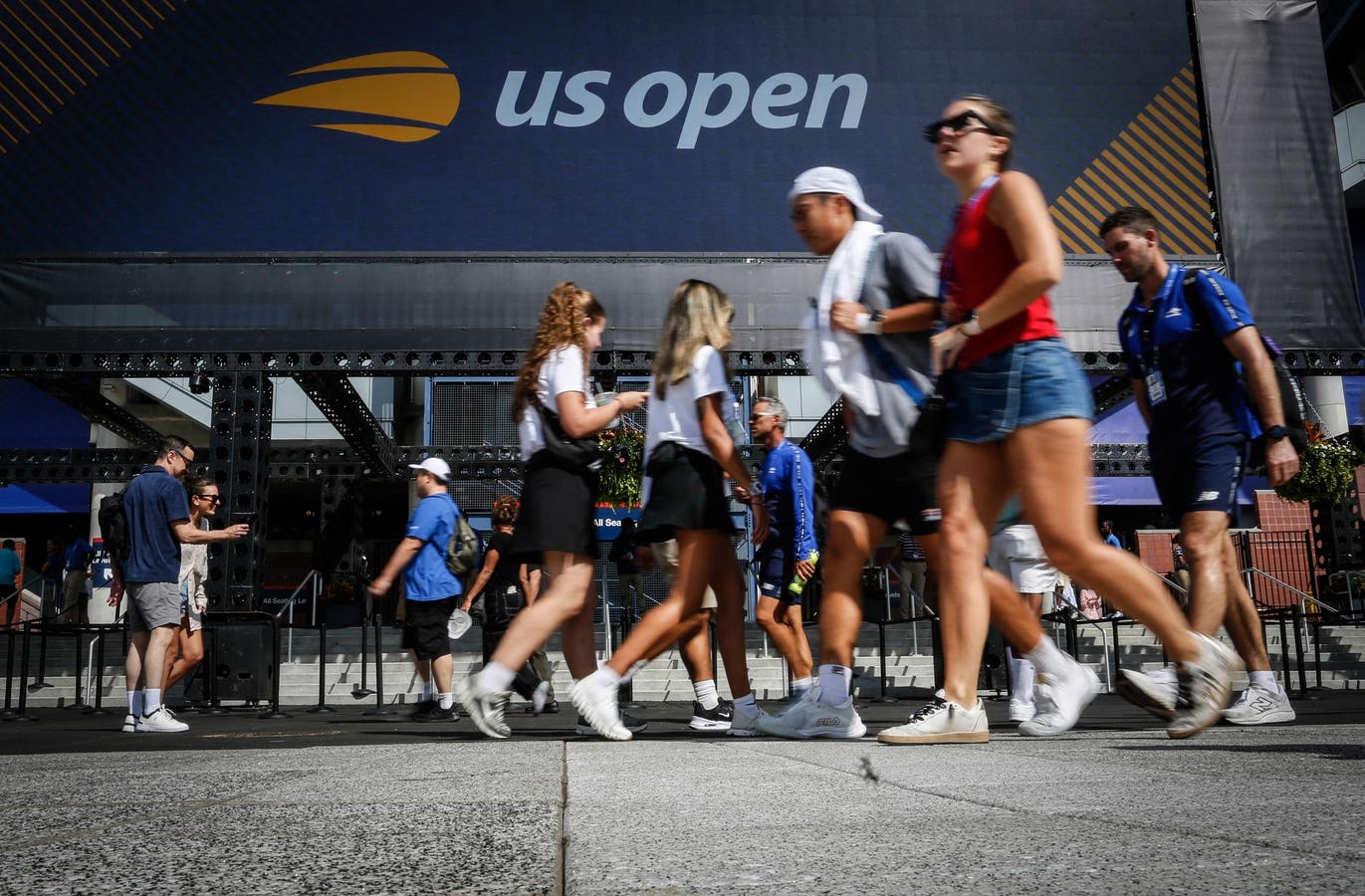
Fans and spectators arrive on day one of the US Open tennis tournament at the USTA Billie Jean King National Tennis Center in New York City, on August 24, 2025. (Photo by Kena Betancur / AFP) (Photo by KENA BETANCUR/AFP via Getty Images)
AFP via Getty Images
The year-end WTA Finals in Riyadh and next week’s ATP equivalent in Turin are the trending topics on the court right now. The Grand Slams are done for 2025, but that hasn’t stopped the likes of Jannik Sinner and Aryna Sabalenka from calling them out for more prize money and a drastic change in player welfare.
It has been a tumultuous time for the tennis authorities. While the finishing line is in sight this year, the pile of broken bodies and complaints from the game’s elite has been a constant background noise to the action. The players know their worth. The Grand Slams have listened. The ensuing silence isn’t golden for those at the top of the game and doesn’t cover the bills for the lower-ranked players at the bottom of the food chain. More big voices are speaking out to try to force the issue.
The first heavy serve from the stars came in March when the majority of the top 20 men’s and women’s players put their name to a letter addressed to all four majors, demanding “a more appropriate percentage of tournament revenues, reflective of the players’ contribution to tournament value.”
An initial meeting took place at Roland Garros just days before the French Open between the CEOs of the slams and a group of players that included Sinner, Sabalenka, Coco Gauff, and Casper Ruud. They were represented by Larry Scott, former CEO of the WTA, who was responsible for a 40 per cent increase in prize money during his tenure.
Jasmine Paolini has been at pains to point out this fight has more than one storyline. “I know the media will focus on the prize money and the big-name players who signed the letters, but that really misses the point. This is about driving change for every tennis professional, now and in the future,” said the two-time major runner-up.
The follow-up letter came to light in September after more meetings in the summer, and a holding period initiated by the slams to deal with the fallout from the separate PTPA lawsuit. That action from the independent players union, co-founded by Novak Djokovic, has accused them of profiting at the players’ expense.
The second missive addressed the lack of player welfare benefits, including maternity, healthcare and pensions, as well as the black hole in player consultation on schedule and format changes.
“Many fans would be surprised to learn that although they make about 80% of the revenue that comes into professional tennis, the Grand Slams don’t contribute a dollar to the pension, healthcare and maternity schemes of the players who provide the entertainment, action and drama which brings in that revenue,” said Paolini. The ATP and WTA contribute approximately $80 million a year toward player welfare benefits.
Sinner spoke last week to the Guardian about the Slams’ inaction just days before he recaptured the No. 1 ranking, while Ben Shelton and Taylor Fritz also raised the temperature a few days later. Sabalenka suggested that the majors ought to “come to the table.” In September, Carlos Alcaraz called the situation “a mess”
The money pot has been one of the bursting pipes in this cold war with the majors. The players asked for an incremental raise to 22 per cent of revenues by 2030 from the current figure of around 15 per cent across the slams. The big four point to the increase in prize money over recent rounds. The U.S. Open offered the biggest-ever prize pot in slam history this year, raising the fund to $90 million, a 20 per cent increase on 2024.
“If the tours are able to get 22 per cent. Why aren’t the slams?” said current U.S. Open women’s doubles champion Gaby Dabrowski, who has been on the WTA Player Council since 2019.
MELBOURNE, AUSTRALIA – JANUARY 09: Aryna Sabalenka of Belarus and Jannik Sinner of Italy speak during the draw for of the 2025 Australian Open at Melbourne Park on January 09, 2025 in Melbourne, Australia. (Photo by Daniel Pockett/Getty Images)
Getty Images
“I think we’ve made a little bit of progress with the U.S. Open increasing prize money,” the Canadian told me. “But there’s a reason why the top players have their own teams, physios, massage therapists and occasionally nutritionists. We need to have the conversation about player sustainability, funneling that money down to those who are ranked lower. We need those players to be protected, to have a voice.”
The major merry-go-round starts afain in January at the Australian Open with the main draw starting on a Sunday for the third consecutive year. That was a decision taken by the organisers in an attempt to provide a “fair and equitable schedule,” according to Tournament director Craig Tiley.
It remains to be seen how the Grand Slams respond to increasing player pressure. Fair and equitable appears to be some distance away for now.

